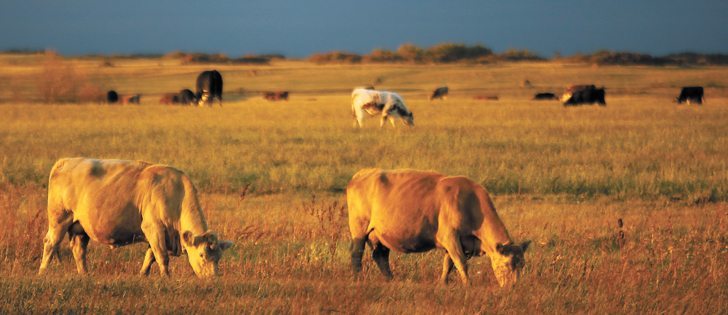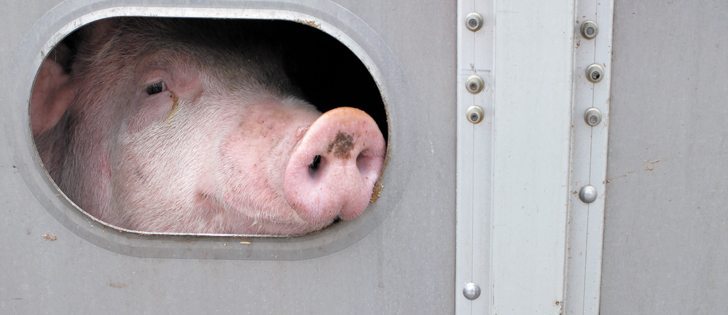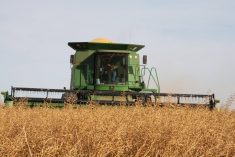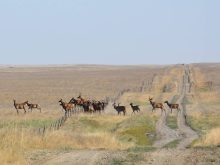“On this day I had no exit strategy because I didn’t think anything would happen,” says Sascha-Kate Marskell
It was the kind of day that cow-calf producers love: late spring and sunny, near the end of calving season. Newborn calves frolicked in the pasture, their dams keeping watch and chewing their cuds.
The bright green of new spring grass was evident around the bale feeders and in many of the pasture’s sunny spots.
Sascha-Kate Marskell of Long-view, Alta., was checking the few heifers yet to give birth in her herd of 240 Black Baldies.
Nearby she saw the gentle cow that had given birth a few days earlier. Marskell had given both cow and calf a few pats the previous day.
Read Also

New program aims to support plant-based exports to Asia
Understanding the preferences of consumers in Taiwan and how they differ from Indonesia or Malaysia isn’t easy for a small company in Saskatchewan.
That morning of June 28, 2012, she found one heifer that was starting to calve. She turned back toward the house with intentions to check again in a few hours.
“Next thing, I’m down on the ground. I landed face down and I could feel all four of her hoofs on top of me and just this blood-curdling sound,” Marskell said.
“I put my hands over my head to protect my head and I don’t know if I blacked out or not.”
Things went a bit hazy after that, but she managed to stumble her way back to the house, bleeding and bruised and without her work boots, which had come off in the assault.
The cow that had calved three days earlier, the one tame enough to pat, had attacked, collapsing Marskell’s right lung and breaking all her ribs on the right side.
Marskell also had scalp lacerations, a torn rotator cuff and a shard of hoof embedded in her left leg.
No wonder, then, that after a shower, some Tylenol 3s and several shots of Scotch, she was taken by her partner to the hospital in High River, Alta., for treatment of multiple injuries.
Bruising on most of her body initially obscured the piece of hoof in her leg. One month later, it ulcerated.
“They drew that little back line and said, ‘you know, we’ll probably have to amputate from the knee down,’ ” she said.
That didn’t happen, but she spent four months on intravenous antibiotics and still has nerve and tissue damage.
What made a good cow go so bad?
“She was 1,740 pounds,” says Marskell. “She ended up going to Cargill.”
In the meantime, she and her partner, Keith Poffenroth, tested the soil in the calving pasture, particularly in the area around the heavily manured bale feeders.
They believe the results pointed to nitrate poisoning.
“It’s the new grass,” said Marskell.
“If (the cows) eat enough of that, then it’s just enough to set off that ticking time bomb, I guess, or to make them psychotic.”
Marskell said she didn’t know about the danger it might pose to cows and people at the time of the attack. She wonders if that’s the case for other ranchers.
“I really think that farmers should be educated that this stuff happens,” she said.
“It’s real. We all know safe handling practices with any kind of livestock. You always know that if you’ve got one that’s always got her head up at you, and you’re in the corrals with her, you’ve always got a hand up on the rail, and you’ve always got an exit strategy. On this day I had no exit strategy because I didn’t think anything would happen.”
Marskell welcomes the chance to tell her story as a warning to others.
However, the incident hasn’t dimmed her enthusiasm for either ranching or animals.
“If you let fear beat you, you might as well quit and do something else, but if you’ve got a passion for the industry that you’re in, you’re always going to go back to it, no matter what challenges you’ve had in the past,” she said.
“Being in the cattle business is so rewarding. With that, we all know it comes with a lot of work, and all the animals under your care are like your own and you just want the best for them. So sometimes you do let your guard down a little bit.”


















